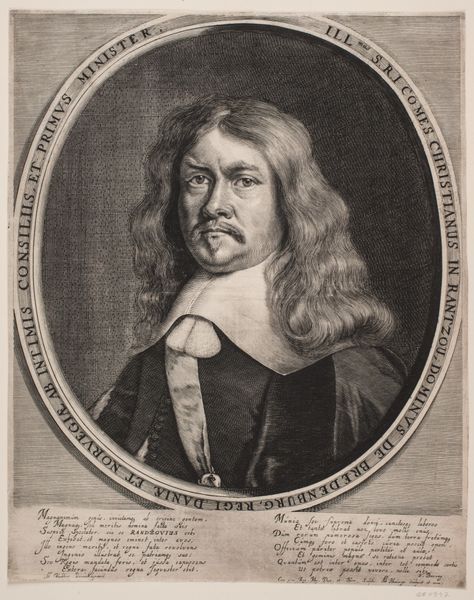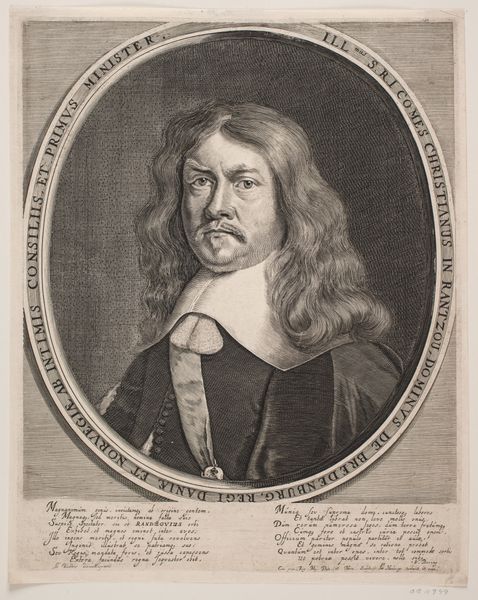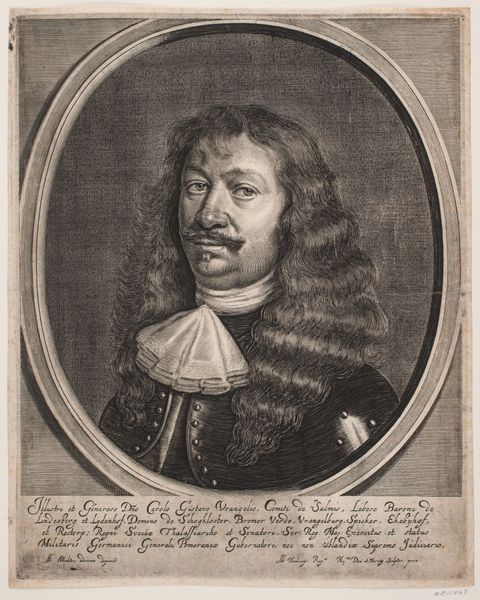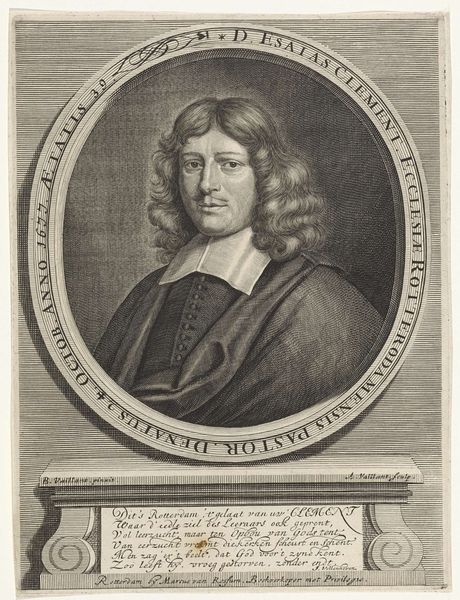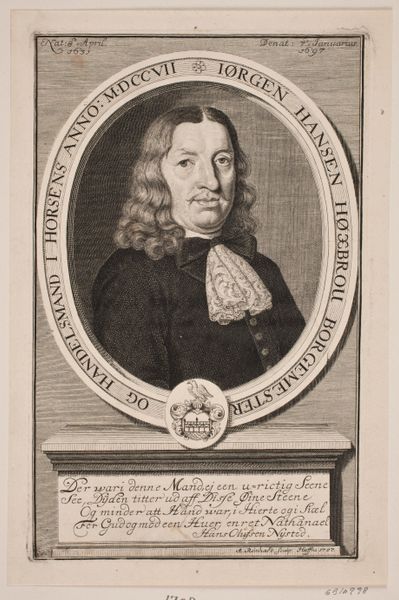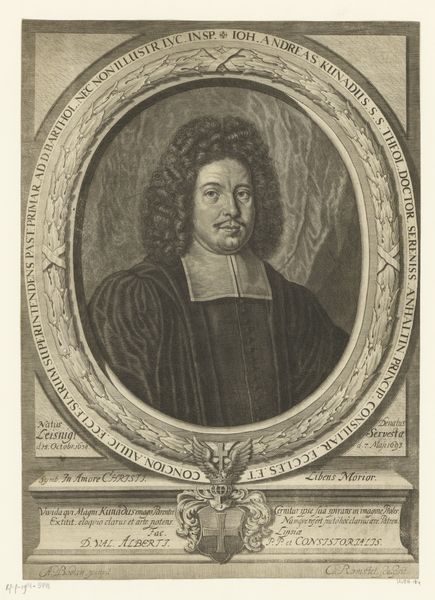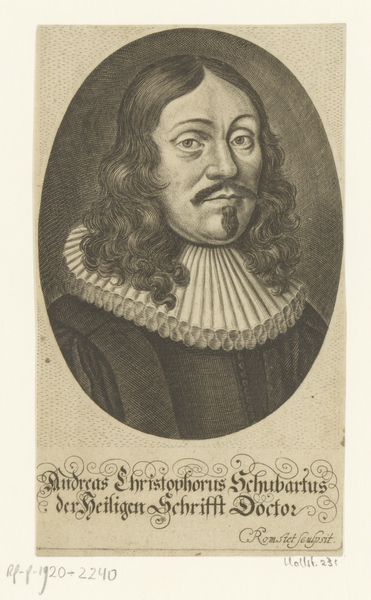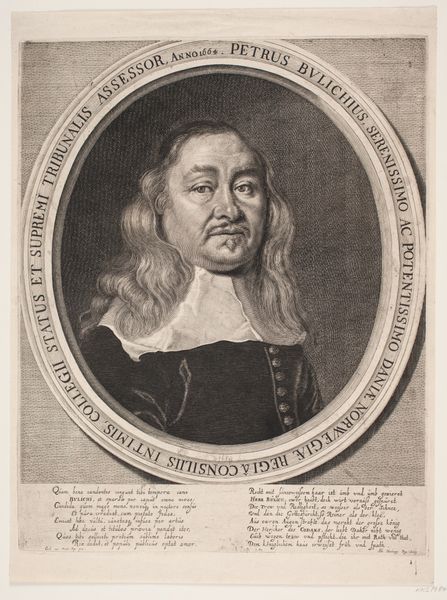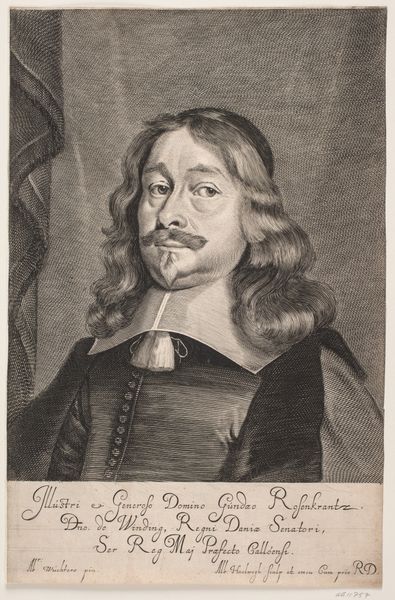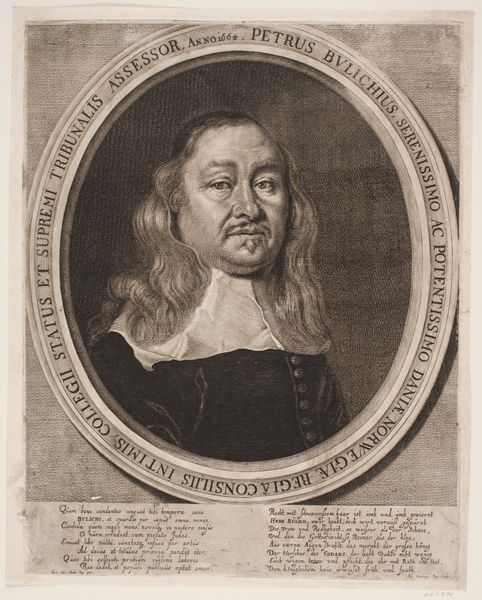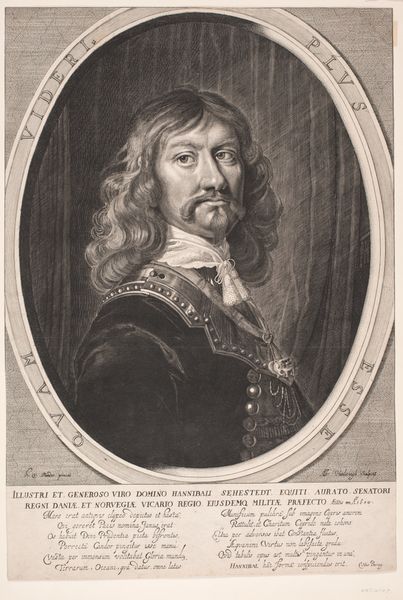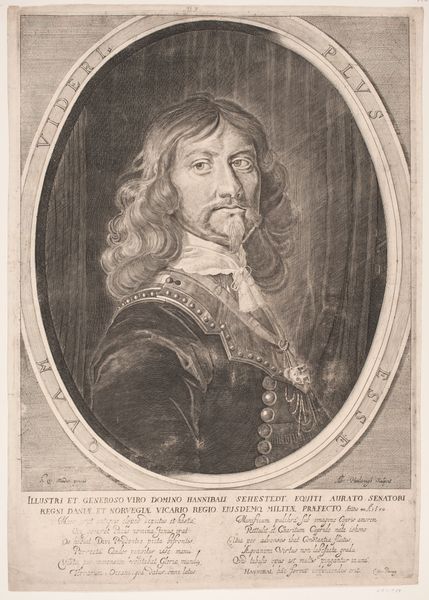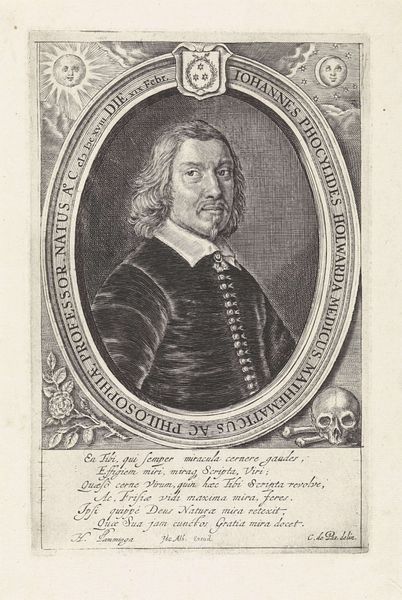
print, engraving
#
portrait
#
baroque
# print
#
portrait reference
#
history-painting
#
academic-art
#
engraving
Dimensions: 353 mm (height) x 273 mm (width) (bladmaal)
Curator: Take a moment to observe this striking engraving from the period of 1662 to 1663, titled "Christian Rantzau," created by Albert Haelwegh. It is currently housed here at the SMK, the Statens Museum for Kunst. Editor: The starkness of the black ink on the white paper creates an undeniable air of gravitas. Look at the texture achieved purely through lines – from the intricate detail of his hair to the shadowing that defines his face. It’s all about the precision of the hand and the pressure applied. Curator: Absolutely. It's a fascinating representation of power and status during the Baroque era. Christian Rantzau was an influential figure, and Haelwegh captured him here in a way that reinforced his political standing. Notice the Latin inscriptions surrounding the portrait, alluding to his role and titles. The choice of engraving was deliberate. It allowed for wide distribution of Rantzau's image, solidifying his place in the political landscape. Editor: I’m drawn to that very distribution aspect. Consider the labor involved in producing multiple prints like this! Each line had to be meticulously carved into a metal plate. Think about the workshop where this was made, the apprenticeship system that trained the engravers, and how the prints themselves became a commodity, circulated and consumed within specific social circles. This wasn’t just about Rantzau's image, but also the work, and system, of creating images. Curator: Indeed. And within those circles, images like these functioned as tools. This engraving helped Rantzau to project an image of authority and intellect, qualities that were prized in the aristocratic class. His dress, his gaze, even the meticulous detail of the engraving, were all carefully constructed to convey a message of unwavering leadership. Editor: Though I imagine the impact of this sort of art varies widely depending on who you ask, which is especially important given it's status as essentially an 'image' circulating through many classes in society... To me, the fascinating thing here is that even through the portrait and carefully constructed social context, it is just black lines pressed to the paper, revealing much about the world it occupies, yet not enough about the individual! Curator: I think considering it as a piece within history offers different valuable layers. I found the social role this piece once had very informative to think about. Editor: Exactly, to know its parts offers new wholes.
Comments
No comments
Be the first to comment and join the conversation on the ultimate creative platform.
